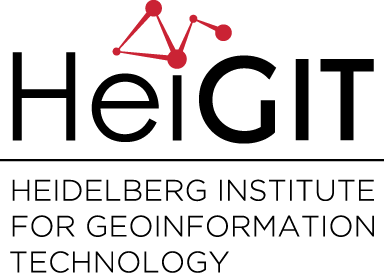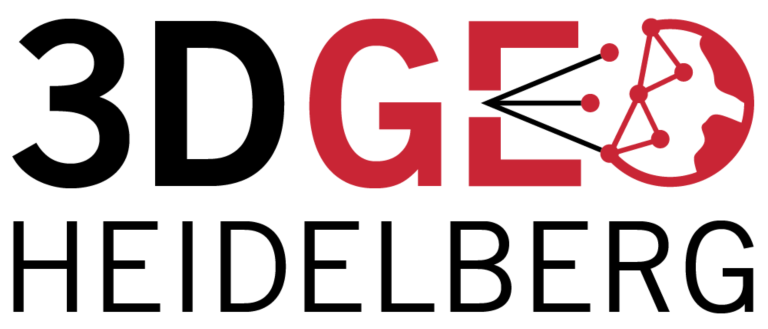Author: GIScience HD
-
GIScience Colloquium talk on Adaptive Trip Planning by Dr. Thomas Liebig
we cordially invite everybody interested to our next open GIScience colloquium talk Adaptive Trip Planning Dr. Thomas Liebig TU Dortmund, Artificial Intelligence Unit Time and date: Tue, September 12, 10:00 am Venue: INF 348, Room 015, Department of Geography, Heidelberg University Route planning makes direct use of geographic data and provides beneficial recommendations to the public.…
-
Study “Multiscale analysis and reduction measures of urban carbon dioxide budget based on building energy consumption” published
The 3D spatial data processing group had the opportunity to collaborate with the team of Prof. Tzu-Ping Lin from National Cheng Kung University, Tainan, Taiwan, within the frame of a study dealing with carbon emission reduction measures in urban environments. One option of reducing carbon emission by buildings is to install photovoltaic (PV) panels in…
-
ArchEyeAutomatic summer school 2017
From 26 to 28 July, the 3D spatial data processing group contributed to the “ArchEyeAutomatic summer school 2017: Cameras, Drones, and Laser scanning. Modern ways to document ancient objects”. With a focus on documenting and analyzing archaeological sites and objects, the summer school introduced around 40 participants to various methods of close-range remote sensing at…
-
Innsbruck Summer School of Alpine Research 2017: Close Range Sensing Techniques in Alpine Terrain
From 16 to 22 July, the second ISPRS Summer School of Alpine Research took place in Obergurgl, Austria. Around 40 participants from four continents enjoyed a mix of lectures, field work and hands-on data processing related to various research topics in high mountain research. Hosted at the beautifully located and perfectly equipped Alpine Research Centre…
-
Determination of building inundation depths based on user-generated flood images – new study published
In our recently published study “Direct local building inundation depth determination in 3-D point clouds from user-generated flood images” we present a new approach for deriving local building inundation depth from ordinary user-generated flood images captured during a flood event. After reconstructing a 3-D scene of the building of interest with close-range photogrammetry (CRP) algorithms,…
-
3D bathymetry measurements in shallow-water environments with a low-cost sensor – study published
To take bathymetric measurements in areas with shallow water is very challenging for methods such as SONAR or bathymetric LiDAR. In our study “Assessing the Potential of a Low-Cost 3-D Sensor in Shallow-Water Bathymetry”, we examine the performance of a low-cost 3D camera when capturing bathymetry in waters up to 0.4 m depth. The tested…
-
Reducing stress by avoiding noise with ‘Quiet Routing’ in OpenRouteService
Noise pollution is a growing problem in many urban environments, affecting citizens’ daily life. It can reduce citizens’ happiness, increase their stress, and even people them get sick if they are exposed to noise pollution for a long period of time. In recent studies we investigate the use of crowdsourced data to derive noise polluted…
-
Job Offer: Software Engineer Geoinformation Technology / OpenStreetMap
Open Position: Software Engineer Geoinformation Technology / OpenStreetMap Heidelberg Institute for Geoinformation Technology (HeiGIT) In order to promote technology transfer and applied research in the area of Geoinformatics, the Heidelberg Institute for Geoinformation Technology (HeiGIT) is currently being established with the support of the Klaus-Tschira Foundation. http://www.heigit.org. This is to be continued in the future…
-
GIScience Colloquium talk on “Heatmapping”: Accessing Geodatabases of Building Stocks for the Development of Spatial Energy System Models by Sebastian Blömer
we cordially invite everybody interested to our next open GIScience colloquium talk “Heatmapping”: Accessing Geodatabases of Building Stocks for the Development of Spatial Energy System Models Sebastian Blömer ifeu Institut für Energie- und Umweltforschung Heidelberg Time and date: Mon, July 10, 2.15 pm Venue: INF 348, Room 015, Department of Geography, Heidelberg University To evaluate the…
-
Introducing Healthy Routing preferring Green Areas with OpenRouteService
Research in psychology and public health shows that there are environmental factors that cause an area to impose more or less stress to a person. One example is that being surrounded by natural green areas (meadows, parks, trees and forests etc. or also blue water areas) has a relaxing influence to the mood of a…
-
Analysing Accessibility of Amazon.com Logistics for all the US with OpenRouteService Isochrones API
Recently Barrons studied the effect of Amazon.com buying Whole Foods for US$13.7 billion. They used the OpenRouteService Isochrones API for an detailed accessibility analysis of the whole US. With OpenStreetMap based OpenRouteService and US Census data they calculated how much US population is covered within different driving times from the US wide network of the 444 Whole…


